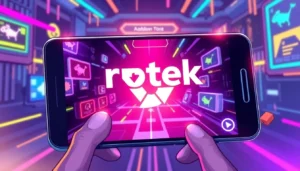Mastering Naver: Comprehensive Guide to Korea’s Premier Online Platform

Introduction to Naver and Its Ecosystem
Since its launch in June 1999, naver has established itself as South Korea’s dominant online platform, seamlessly integrating various digital services into a cohesive ecosystem. Operated by the Naver Corporation and headquartered in Seongnam-si, Korea, Naver has evolved from a simple search engine into a multifaceted digital powerhouse. With over two decades of innovation, Naver not only caters to Korean internet users but also continually expands its influence through emerging technologies like artificial intelligence (AI) and mobile integration, positioning itself at the forefront of digital transformation.
What is Naver and Its Origin
Naver was launched in 1999 by founder Lee Hae-jin with the primary goal of creating a comprehensive portal that could serve as the digital gateway for Korean users. Unlike global giants like Google, Naver was specifically tailored to meet the cultural, linguistic, and lifestyle needs of South Korean internet users, offering localized content and services that resonate profoundly with its audience.
The platform’s initial success stemmed from its highly effective search engine, optimized for Korean language processing. It quickly became the go-to portal for news, entertainment, and community engagement. Today, Naver is owned and operated by the Naver Corporation, a leading tech conglomerate pushing boundaries in AI, robotics, and big data, reflecting South Korea’s technological ambitions.
Naver’s Core Services and Products
Naver’s ecosystem extends far beyond its search capabilities, encompassing a broad array of services integral to daily digital life:
- Search Engine: Known for its excellent Korean language processing, offering accurate and contextual results.
- Blog and Knowledge Platforms: Naver Blog and Naver Knowledge iN foster community content creation and knowledge sharing.
- Webtoons and Digital Comics: Naver Webtoon is a leading platform revolutionizing digital comic consumption globally.
- Maps and Navigation: Naver Map provides detailed, real-time routing and mapping services optimized for Korean infrastructure.
- Mobile Payment: Naver Pay facilitates seamless transactions within the Naver ecosystem and partner services.
- News & Media: Curated news aggregations and media outlets keep users informed on current events.
- E-commerce & Shopping: Integrated shopping experiences allow users to browse and purchase products directly.
This interconnected suite of tools and services enhances user engagement, creating a sticky ecosystem that fosters trust and habitual use.
Comparing Naver to Global Search Engines
While Google dominates globally, Naver is particularly tailored to the Korean market with features that localize and enhance its relevance. For example, Naver efficiently processes Korean language nuances, providing superior search relevancy in Korea compared to Google’s global algorithms. Additionally, Naver’s vertically integrated services—such as blogs, news, and shopping—are deeply rooted in its search results, enabling a culture of content consumption and participation that many Western platforms do not prioritize.
Moreover, Naver’s knowledge graph integrates various local services directly into its search results, offering users quick access to local dining, events, and community insights. This approach creates a more context-aware experience tailored specifically to their audience’s preferences, setting it apart from its global counterparts.
Optimizing Your Presence on Naver
Effective Strategies for Naver Blog and Web Content
Establishing a visible and authoritative presence on Naver requires understanding its unique SEO dynamics. Unlike Google, Naver favors content created within its ecosystem, such as blogs and Cafe communities, which are highly prioritized in search results. To optimize this:
- Create Authentic, Rich Content: Focus on local relevance and engaging storytelling. Use keywords naturally, especially in Korean, to improve indexing.
- Leverage Naver Blog: Regular posting, adding multimedia elements (images, videos), and interacting with commenters enhance visibility.
- Utilize Naver Cafe: Communities build loyalty and direct engagement—effective for niche markets or targeted audiences.
- Structure Content for Naver’s Algorithms: Use clear headings, keyword tags, and backlinks within Naver to signal relevance.
Case Study: Several local businesses have improved their search rankings substantially by focusing on native content strategies aligned with Naver’s preferences, resulting in increased site traffic and conversions.
Utilizing Naver’s Knowledge Graph and Local Services
Naver’s knowledge graph is a contextual AI-driven feature integrating information from various internal services. Businesses can enhance visibility by optimizing their Naver Place listings, ensuring accurate and complete profiles with keywords relevant to their niche. Engaging with local events and adding timely updates to Naver Blog or Map can also boost prominence.
For instance, a restaurant owner optimizing their Naver Place profile, sharing updates via blogs, and encouraging reviews can significantly improve local search visibility—driving more traffic and foot traffic.
SEO Best Practices Tailored for Naver
Optimizing for Naver requires a different approach than for Google:
- Keyword Localization: Prioritize Korean language keywords and regional terms.
- Content Freshness: Regularly update blogs, news, and community pages to stay relevant.
- Engagement Focus: Encourage user comments and participation for higher rankings.
- Rich Media Use: Incorporate images, videos, and interactive elements for enhanced user engagement.
- Internal Linking: Use Naver’s ecosystem features to create internal links—blogs, cafes, and webtoons—boosting authority.
Performance metrics such as engagement rates, local search rankings, and Naver’s own analytics can measure success, allowing continuous optimization.
Naver Apps and Mobile Optimization
Maximizing the Naver App for Users
The Naver app is a hub for daily access to news, shopping, entertainment, and navigation. To maximize its effectiveness:
- Encourage app usage by providing mobile-optimized content and push notifications tailored to user preferences.
- Integrate chatbots or AI assistants to facilitate instant customer service.
- Use the app’s platform-specific features like location-based notifications to boost local marketing efforts.
Mobile SEO Considerations for Naver Platforms
Since many users access Naver via mobile devices, optimizing mobile pages for faster load times, responsive design, and local keyword integration is critical. Consider app indexing strategies and ensure seamless user experience across devices.
Leveraging Naver Map and Navigation Tools
Naver Map is essential for location-based marketing. By registering accurate business locations, sharing real-time updates, and incorporating map features into online content, businesses can improve local discoverability and drive in-store visits.
Building Engagement and Community on Naver
Creating Compelling Content for Naver Webtoon and Blogs
Naver Webtoon has revolutionized digital comics, attracting millions of users globally. Brands can tap into this platform by translating or sponsoring popular webtoons or creating branded content that resonates culturally. For blogs, storytelling and authenticity foster community loyalty.
Engagement Tactics Within Naver’s Social Features
Building a vibrant community involves encouraging user comments, reviews, and participation within cafes and webtoon platforms. Hosting events, Q&A sessions, and offering exclusive content promote ongoing engagement.
Measuring Success with Naver Analytics Tools
Utilize Naver Analytics and internal data to track user interactions, page views, time spent, and conversion rates. Regular monitoring allows for data-driven adjustments, optimizing campaigns for higher ROI.
Future Trends and Innovations on Naver
Naver’s AI Developments and Impact
Naver’s ongoing investment in AI—ranging from intelligent search algorithms to conversational AI—sets the stage for personalized user experiences. These advancements will further refine content recommendations, improve localization, and enhance real-time data processing, making visibility strategies more precise.
Integrating New Technologies for Better Visibility
Embracing emerging trends such as AR/VR, voice search, and data-driven personalization can give businesses a competitive edge within Naver’s ecosystem. Staying adaptable and innovative is vital for leveraging future features.
Adapting to Evolving User Behaviors and Features
As user preferences shift toward multimedia and interactive content, continuous updates, native integrations, and personalized experiences will be crucial. Monitoring Naver’s platform updates and user analytics will help businesses remain relevant.






